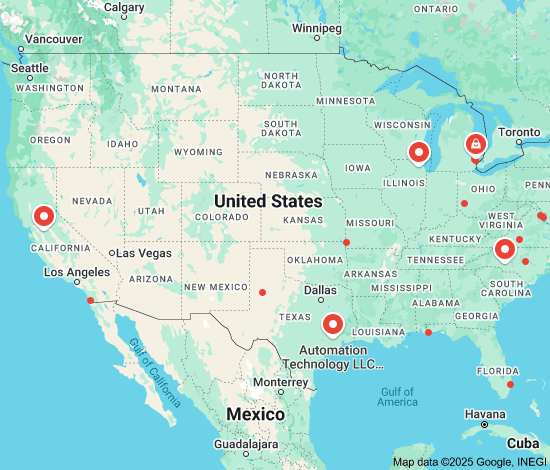
Exploring the Wonders of Zigbee Technology in Modern Connectivity
Zigbee Technology: Revolutionizing the Internet of Things
Imagine a world where your home is seamlessly connected, where devices communicate effortlessly to make your life easier and more efficient. This vision is becoming a reality, thanks to Zigbee technology.
Zigbee is a wireless communication protocol designed for low-power, low-data-rate applications. It operates on the IEEE 802.15.4 standard and is ideal for creating networks of interconnected devices in various settings, from smart homes and industrial automation to healthcare and agriculture.
One of the key advantages of Zigbee technology is its ability to form mesh networks, where each device can act as a router, extending the network’s range and reliability. This self-healing feature ensures that even if one device fails or moves out of range, the network remains operational.
The low power consumption of Zigbee devices makes them perfect for battery-operated sensors and actuators in IoT applications. With Zigbee technology, devices can communicate over long distances while conserving energy, prolonging battery life and reducing maintenance costs.
Security is another crucial aspect of Zigbee technology. It offers robust encryption and authentication mechanisms to protect data transmission and ensure the privacy of users. This level of security is essential in IoT environments where sensitive information is exchanged between devices.
From smart lighting systems and thermostats to remote monitoring solutions and asset tracking devices, Zigbee technology is transforming how we interact with our surroundings. Its versatility, reliability, and scalability make it a popular choice for developers looking to create interconnected ecosystems of smart devices.
In conclusion, Zigbee technology plays a vital role in shaping the future of the Internet of Things by enabling seamless connectivity between devices while ensuring efficiency, security, and interoperability. As we continue to embrace the era of smart technologies, Zigbee stands out as a key enabler in building smarter, more connected environments for us all.
Understanding Zigbee Technology: Key FAQs on Its Functionality, Advantages, and Applications in IoT
- What is Zigbee technology and how does it work?
- What are the key advantages of using Zigbee in IoT applications?
- How does Zigbee ensure secure communication between devices?
- What are the main differences between Zigbee and other wireless communication protocols?
- Can Zigbee devices operate on low power? How does this benefit IoT systems?
- Is Zigbee suitable for creating mesh networks? How do these networks function?
- What types of devices can be connected using Zigbee technology?
- Are there any limitations or challenges associated with implementing Zigbee in smart home environments?
What is Zigbee technology and how does it work?
Zigbee technology is a wireless communication protocol that operates on the IEEE 802.15.4 standard, designed for low-power, low-data-rate applications in the Internet of Things (IoT) ecosystem. It enables devices to form interconnected networks where they can communicate with each other efficiently. Zigbee works by creating mesh networks, allowing devices to relay data through multiple pathways and ensuring reliable connectivity even in challenging environments. Each Zigbee device can act as a router, extending the network’s range and enhancing its resilience. With its focus on energy efficiency, security features, and scalability, Zigbee technology is revolutionizing the way smart devices interact and collaborate in various settings.
What are the key advantages of using Zigbee in IoT applications?
When it comes to IoT applications, Zigbee technology offers several key advantages that make it a preferred choice for developers and users alike. One of the primary benefits of using Zigbee in IoT applications is its ability to form mesh networks, allowing devices to communicate over long distances while maintaining reliability and range. This self-healing feature ensures seamless connectivity even if a device fails or moves out of range. Additionally, Zigbee devices are known for their low power consumption, making them ideal for battery-operated sensors and actuators in IoT setups. The robust security features of Zigbee technology, including encryption and authentication mechanisms, ensure the protection of data transmission and user privacy, making it a secure option for sensitive IoT environments. Overall, the scalability, reliability, energy efficiency, and security features of Zigbee technology make it a standout choice for powering interconnected IoT ecosystems.
How does Zigbee ensure secure communication between devices?
Zigbee ensures secure communication between devices through robust encryption and authentication mechanisms. When devices communicate using Zigbee technology, data transmission is encrypted to prevent unauthorized access or tampering. Additionally, Zigbee devices authenticate each other to verify their identities before exchanging information, adding an extra layer of security. This approach helps safeguard sensitive data and ensures the privacy of users in IoT environments where secure communication is paramount. By implementing these security measures, Zigbee technology provides a reliable framework for establishing trust among interconnected devices and protecting against potential threats or vulnerabilities.
What are the main differences between Zigbee and other wireless communication protocols?
When comparing Zigbee to other wireless communication protocols, several key differences stand out. One significant distinction is Zigbee’s focus on low-power consumption, making it ideal for battery-operated devices in IoT applications. Additionally, Zigbee’s mesh networking capability sets it apart by allowing devices to act as routers, enhancing network range and reliability. Another crucial difference lies in Zigbee’s robust security features, including encryption and authentication mechanisms that ensure data privacy. These factors, combined with Zigbee’s scalability and interoperability, make it a preferred choice for developers seeking efficient and secure connectivity in smart home automation, industrial control systems, and other IoT environments.
Can Zigbee devices operate on low power? How does this benefit IoT systems?
Zigbee devices are designed to operate on low power, making them ideal for IoT systems. This low power consumption allows Zigbee devices to run on battery power for extended periods, reducing the need for frequent battery replacements and lowering maintenance costs. This benefit is especially crucial in IoT applications where devices are deployed in remote or hard-to-reach locations. By conserving energy, Zigbee technology ensures that IoT systems can operate efficiently and reliably, providing continuous connectivity and data transmission without compromising performance.
Is Zigbee suitable for creating mesh networks? How do these networks function?
Zigbee technology is highly suitable for creating mesh networks due to its inherent capability to form interconnected networks where each device can act as a router. In Zigbee mesh networks, devices communicate with each other by passing data through multiple hops until the information reaches its intended destination. This self-healing feature ensures network reliability and coverage, even if individual devices fail or move out of range. By leveraging the mesh topology, Zigbee networks can extend their range and improve signal strength, making them ideal for IoT applications where connectivity, scalability, and resilience are essential.
What types of devices can be connected using Zigbee technology?
Zigbee technology offers a versatile platform for connecting a wide range of devices in various applications. From smart home devices like thermostats, light bulbs, and door locks to industrial sensors, healthcare monitors, and agricultural equipment, Zigbee can seamlessly link together diverse devices to create interconnected networks. Whether it’s enabling energy-efficient lighting systems, monitoring environmental conditions in smart buildings, or tracking inventory in warehouses, Zigbee technology provides a reliable and efficient communication solution for an array of IoT devices across different sectors.
Are there any limitations or challenges associated with implementing Zigbee in smart home environments?
Implementing Zigbee technology in smart home environments comes with certain limitations and challenges that users should be aware of. One common issue is the potential for interference from other wireless devices operating on the same frequency band, which can affect the reliability of Zigbee networks. Additionally, the initial setup and configuration of Zigbee devices may require some technical expertise, posing a challenge for less tech-savvy users. Another limitation is the range of Zigbee devices, which may be limited compared to other wireless protocols, requiring careful placement of routers and repeaters to ensure full coverage within a smart home. Despite these challenges, with proper planning and troubleshooting, Zigbee technology can still offer a robust and efficient solution for creating interconnected smart home ecosystems.

